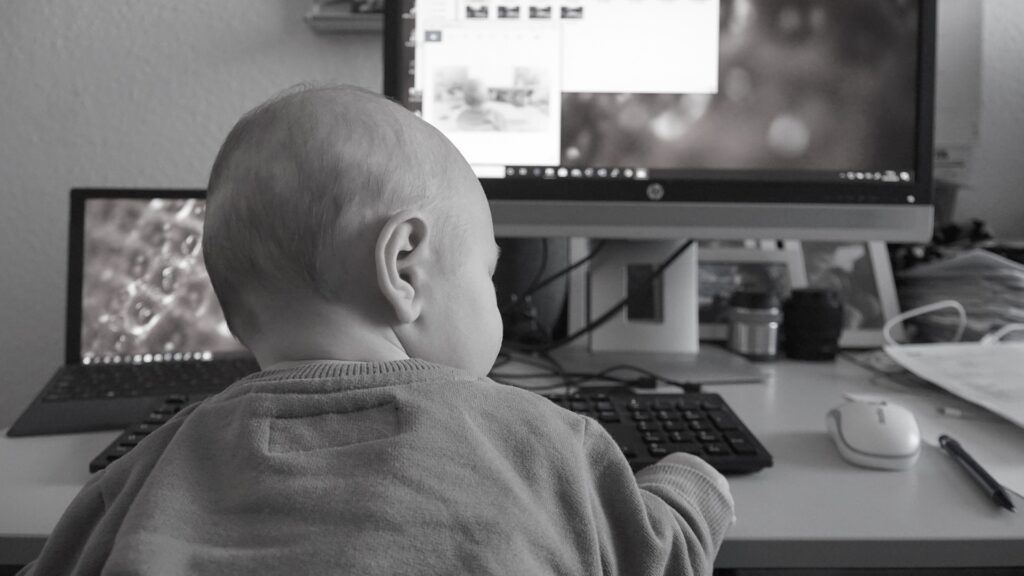(This article was originally published on Medium)
2020 Changed Everything
We’ve had a pandemic, all of our economies are a mess, massive war activity has caused shortages and lack for all, and we think that John Smith is still the John Smith from January 2020? Uhm, no.
Those nicely stacked files of paper you had of statistics and best practices and personas has been thrown up into the air never to be set in place again.
Those of us in the thick of it are a hot mess and we will be for a while. I know that I purchase differently than I did pre 2020, but I’m also purchasing differently than I did from 2021 and 2022. And I have no idea how I’ll purchase going forward or when I’ll feel like I’m in a normal state of operation again. The word to describe me and probably most of the people my age would be — cautious; now and for quite a while from now.
So my generation may not be the ones to target.
Gen Z; The Target Market
According to the National Retail Federation, 87% of parents say that their children influence their purchasing decisions. Gen Z (those born between 1995–2009) is involved in about a third of their family’s household purchases. 48% are included in the purchasing decisions for the child themselves. The majority of that purchase power, 72%, is within the beginning stages of purchasing.
This means, GenZ is doing the scouting and the research. They are watching what YOU market and then sending what they LIKED back to their parents for purchase.

$500 million+ of purchases are influenced by kids under 12 (That’s Gen Alpha- born between 2010–2024) and 46% of kids under 16 have access to an Amazon Prime account. This is also apparently their favorite place to shop.
These numbers came from 2019. So you’re probably thinking, not relevant anymore right?
Wrong.
According to this 2021 Consumer Culture Report, $347 billion was spent online in the first 6 months of 2020. That was an increase of 30% from 2019.
On The Rise
The influence and purchase power of Gen Z and Gen Alpha is only increasing. While Gen X and Millennials are stressed out and scrambling to recover some kind of routine again, thier kids are taking over the tedious task of R&D.
If this makes you think, “oh great, I wasn’t aware of this dynamic switch. I haven’t been targeting this demographic at all.” All is not lost.
Small and locally focused businesses, I have great news. According to that same consumer report, 65% of shoppers have adjusted their spending habits to support local businesses. “77% of Gen Z strongly agree that shopping online allows them to buy products from new or small companies they couldn’t find in-store.”
As these big businesses are scrambling to reinvent themselves and retarget new demographics and personas, small businesses have a chance to catch up a bit.
As long as building a digital presence is a priority, small business and big business have a bit of a leveled playing field.
By creating an immersive customer experience, business can recover and not only maintain relevance but increase relevance through the power of sensorial connection.
Just what GenZ is looking for. Businesses that they can connect to and believe in.
And this is where the immersive experience comes in.
An Immersive Customer Experience
A lot of people use these words but I feel that usually it’s referring to a small portion of it’s actual potential. A lot of the time the way it is defined is by the technology used like VR, AI, etc. Basically the combining of real and virtual elements is defined as immersive. But I think it’s more simplistic than that.
An immersive customer experience is when you bring the customer into the world of that brand or product through a sensorial connection.
As technology and methodology changes through the years, the best way to define an immersive customer experience is to ask yourself; “how am I portraying my brand or product sensorially?”
Because if you think about it, there is nothing more immersive than using sight, sound, touch, taste, and smell in a way that bonds your customer to you.
A sensory experience doesn’t just stick to you, it sticks within you.
How many times have you heard a sound or a song that took you back to a moment? I can almost guarantee that this has happened to each and every one of us at least once. Good or bad, it’s powerful. By purposefully harnessing this connection, you have an immensely powerful tool at your disposal.
The more senses you can attribute to an experience the better.
Changing Times

We are living in a really interesting and really weird time. For decades, we’ve been told to market this way or not to market that way. That if you are a certain kind of brand, then marketing through this social platform is more effective than that social platform. We’re also more focused on performance marketing for the more immediate results rather than growth marketing which takes a whole lot of time and patience.
But here’s the deal.
Not only is the customer changing but the tech is expanding and growing faster than we can possibly keep up with. I could say that TikTok marketing is important but I can’t confidently say that that will be the case 5 years from now or even by the time you are reading this. It might not be too long before you’re actually saying, “what’s TikTok”?
The only way we will survive this roller coaster of expectations, is to confidently agree on our brand persona.
Exploring Brand Humanity

Our customer personas haven’t been rebuilt yet. Our brand personas can be whatever we want starting today as long as we stick with them. Let’s find what our brand looks, sounds, feels, tastes, and smells like.
Weird? Maybe. But what do we have to lose? Let’s grow our brand persona into a strong humanistic identity and have the customers that match that come to us. If it works, it’ll be a heck of a lot easier to craft new customer personas moving forward.
Related Articles on Sound In Marketing
How Does Dynamic Sound Stimulate More Authentic Branding
What Does A Black T-Shirt Sound Like?
Audio Alchemy with Steve Keller of Pandora
Ready to Create?
Dreamr Productions would love to help. Contact us today for more information.


